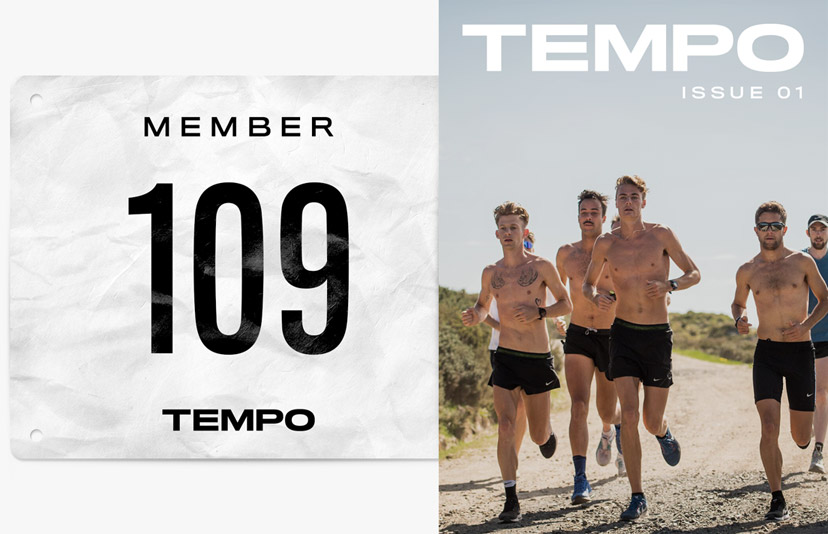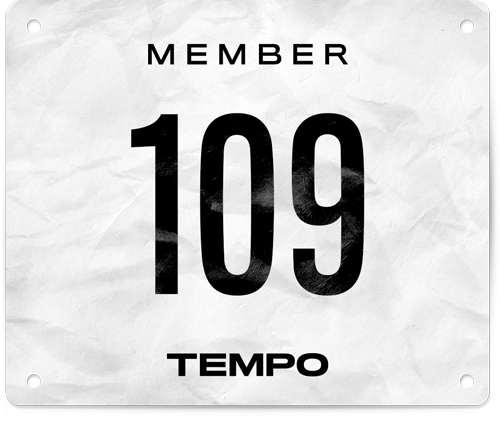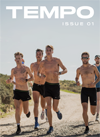Performance
Aarhus 2019 - The race cross country needed
Has Denmark given XC the cure it so desperately needs?
A tiny row of heads is just visible over the high white walls that line the rooftop of the Moesgaard Museum. Flags blown by the southerly wind that carries with it the hint of an early spring. They flutter expectantly for the approaching athletes. These stationary flags are joined by moving ones, carried by excited supporters who are attempting to keep pace with the world’s best runners over the sprawling course, but as they hit the gradient of the rooftop that juts into the sky at an imposing angle they’re dropped, while the racers continue to battle the gradient, staunchly lent into the angle, willing themselves to the top.
We that love running know that cross-country is not about times, it’s about hunger, suffering and passion, meaning that the winner really is the best on that day. And at the 2019 World Cross-Country Championships this was on display.
"It’s a tough course, I know that a lot of you have said that it’s too tough, but it won’t be. Imagine if you were going to do a 10km against these guys on the road, they’d flog us, but this course will bring it closer together."
Brett Robinson
Brett Robinson ends his brief pep talk with an encouraging nod at the rest of the Australian team, some 20 hours before the first shot of the starting pistol is fired.
Robinson, the most experienced male elite runner on the team, had his speech briefly interrupted as key athletes from the Ethiopian contingent had entered this meeting, taking chairs from the soon-to-be dining room at the Scandic hotel in the Danish city of Aarhus. The Ethiopian team and their staff, we observed, were over en masse for these Championships, about to start their pre-race meeting in the room across the hall from the Aussies. As Selemon Barega maneuvered two chairs into his nation’s room, his light frame struggling to lift the imposing pieces of Danish furniture, TEMPO watched on bemused; in less than 24 hours’ time this 19-year-old, reigning U20 World Champion could step up to become the senior men’s counterpart.
‘There are 15 boxes on each side of the starter gantry, so it will be one from each team at the front with the rest lined up behind them. I’m sure we can muscle up, there’s enough room–it’s not like it was in Uganda. Don’t forget you’re racing as a team, and this is really a unique event, bringing together everyone from 5km to marathon runners. There’s far more talent here than what you’d get in a normal 10km race. Enjoy the experience as a team.’
Susan Hobson smiles, dishing out yet more encouragement, having been drafted in with vast experience as the team manager, but, again, the speech is interrupted. This time by the clatter of plates on a trolley being rolled into the room as the all-important pre-race dinner inched closer.
Aarhus 2019, the reason why everyone was here, had been touted as a revolutionary event. A World Cross-Country Championships that would raise the bar for all future editions, the place where the future of the sport would be born. This edition’s elite relay, mass participation race, and ‘The Search’ chase event (where non-national team athletes who meet a certain ability criterion would be allowed to start in the main races, albeit 50 metres behind the elites) and a whole host of zones for added challenges, were being applauded loudly as a means to reinvent the classic cross-country–a discipline that’s allegedly seen dwindling participation and spectator figures for a number of years.
Before heading to the Australian team’s pre-race meeting, we had walked the course. The lap’s two kilometre parcours rose and fell like the waves of the sea that were just a few hundred metres away from where we stood on the now legendary rooftop of the Moesgaard Museum. Its constant ups and downs would be felt more by the legs of the runners than the man-made water splash, the 20-metre mud pit or even the Viking Gauntlet zone. When, during our track walk, a lone out-of-dress Viking explained that he was under explicit instruction not to affect the outcome of the race with their swords and spears, it was debatable whether his tone was one of disappointment or reassurance.
As the Aussie staff closed their pre-race meeting by dishing out the numbers to their full team and reiterated the significance of the discipline to their nation who’ll be hosting the event in two years time, pins were collected and murmuring about the course continued. The focus was being put on pacing, how to use the descents to relax, and tips for coping with the sandy sections that were to prove the toughest ‘additions’ to the track. We heard nothing about how to dodge spears or swords, even though in the photographers meeting Fin Lyck, Event Manager Aarhus Events was adamant that this would be the only event where you see elite athletes chased by vikings.
Early the next morning numerous TV cameras, a VIP zone and already massing fans were eagerly awaiting the first race, the team relay. The dominant roof line of the Moesgaard Museum rises at a 10% gradient from the surrounding bucolic landscape, creating the centerpiece of the race in many ways. However, its passive dominance almost overshadowed the somewhat muted affair that was the team relay–something that we here at TEMPO truly adore but feel needs some work (and much bigger participation. 10 nations?). The museum’s roof is not known as Aarhus’ premier sledging location in the winter for nothing–although the sight of China’s lone female first leg runner tugged at our heart as she ended leg one two minutes behind the leading men.
In the courtyard of the the buildings at the foot of the museum’s climb, marquees had been erected and a temporary warm-up zone sectioned off. Nerves were perceptibly higher in this area, emanating out of the tents and toilet queues. Clad in their national colourways, they prepared for the ensuing pain, knowing that they were facing one of the toughest courses in recent World Cross-Country Championship history. (Although the Belfast 1999 athletes may refute this). Now was the proof of concept for the organisers: did their track have enough steez to usher in a new era for cross-country running? Would mountain runners go toe-to-toe with track athletes? Would steeplechasers have a race-winning edge with the water pit? Would beer-sponsored amateur run crews bring a new flavour to traditional athletics? Could a non-elite even win the race?
“The Ugandan team could blow it all away,” rings in our ears, and we hurriedly note that there haven’t been any truly dominant juniors over the current XC season. Ahead of the racing, the start lists were still being dissected by fans, team staff and one of the many volunteers. ‘I’m sorry about the course, lads,’ proffers IAAF President Seb Coe with a warming smile along with a handshake to Great Britain's team of U20 men. We overhear the conversation as he chats to them over a fence that separates the mixed zone from the call up area, ‘I didn’t pick it. But our British races are just as tough, so you’re ready.’ A group of journalists swoop over to Coe as they notice his presence, the intimate moment with the Brits lost as cameras click, a momentary distraction before the finishing sprint of the U20 women’s race.
Amidst the furore of said race’s almost photo finish, the future of elite male running waited in the call-up area, listening intently to the commentary and keen to get the immediate debrief from the graduates of the race. Or at least, those finishers who were still standing. The bodies on the floor highlighted the destruction that this course was inflicting; the downhill finish was the coup de grace for the runners’ legs, meaning that the IAAF helpers were busy in action clearing the finishing area of bodies fit to collapse. The odd scene of blue coats pulling at the resistant arms of exhausted runners seemed more fitting to an American Cop drama; the need for a clean finish area clearly more important that allowing runners time to recuperate.
The crowds built up during the course of the day, the good weather inflating the numbers: we had our eyes on Beatrice Chepkoech who had some of the best times on paper; Letesenbet Gidet who always looks so at ease; and cross-country ‘debutant’ Hellen Obiri, who had vocalised her ambition for the title to go with the rest she’d won.
In the men’s race we put our money on Uganda, whose line-up looked set to blow the race away–especially Joshua Cheptegei. People say he was done in by the heat in Uganda in 2017, but if you’re 30 seconds clear of Kamworor halfway around the race, that might be more to blame. Then there was Geoffrey Kamworor himself, 26 years old and looking for the hat trick. And Rhonex Kipruto, the young Kenyan, who has demonstrated such form on the roads of late. In short, it was hard to pinpoint the absence of many top athletes–if any.
The racing did not disappoint. Each lap saw the lead group distilled, whittled down to a select few. On the far side of the course, team staff tirelessly attempted to keep pace, not yet aware of how much their arms would ache with the weight of their tall flagpoles. On the nearside, the elites went stride for stride up the 10% gradient of the museum’s roof. Elbows out and bent forward, it was a similar scene to the mass of trendy Danes we’d seen jostling for limited edition pieces at the Wood Wood sale taking place in central Aarhus over this weekend. But the athletes weren’t concerned with a trivial bargain designer t-shirt, they were fighting for a world title, where the first person to blink and back off the pace would fill the list of also-rans.
At the finish the exuberance of the winners belied the exhaustion of the race. Riding high, they congratulated each other with jubilation, whilst fourth-placed and onwards staggered to a halt. Bodies were everywhere, minds pondering what had just taken place, the primeval panic that comes from 30-plus minutes at the limit still evident in the whites of the eyes of the runners. At least we could console them with a dry track, had it been wet who knows what the winning time would have been.
Hellen Obiri opened and closed her perfect cross-country running career, her first and last race seeing her take a momentous World Championships title. Whilst Joshua Cheptegei wrote his own story in the men’s race, and it reads like a running fantasy, whereby the Ugandan returned victorious, the staggering final moments of 2017 forgotten as he outran Kamworwor. Both making us rethink what we thought was possible in running.
In the Australian camp there was a strong showing from runners in each of the events. From Lauren Carey in 16th (3rd non-African) and Sam Clifford in 30th (6th non-African) in the U20 races, to Melissa Duncan in 26th and Brett Robinson in 30th in the elite races. The late withdrawal of Stewart McSweyn with a virus was a blow to the elite men’s team, but McSweyn was on hand to cheer the others on, eager to be part of the post-race debrief. The green and gold of the Aussie team had been carried with pride, seeding the ground for the next World Championships.
"First non-African is pretty good, I guess," comments Robinson from the floor of the mixed zone. He looks a little taken-aback. "I’ve had a 28th place before so this was not my best result but I’m happy. I ran smart, and chose to take the hills easier to save myself for later." A smart move, as the marathon-runner-in-training ran consistently, moving forward as many went backwards.
It was a course that would catch out those who went off too hard. The hardest point? "For sure the sand, I can’t remember how many sections there were covering the roads that the course crossed but each one was deep meaning it just sapped the energy from you. I think that tomorrow’s two-hour run will hurt a bit!"
(He’s right; TEMPO join a handful of Australian men for their 2-hour jog around the city’s parks and coastlines the following day, and it takes a while for them to find their stride).
Did Aarhus 2019 set the new standard for World Cross-Country Championships? That’s hard to say so soon after the race. There was certainly plenty of buzz around the event thanks to the additions that we felt were more token gestures than a real progression to the sport.
From our standpoint cross-country was never really lacking; the ultimate team race that sees runners from 1,500m to marathon do battle, it has always been the only place in running where the best of the best toe the start line. Maybe the somewhat novelty additions of tame Vikings, man-made mud and a course that looped over some world-class architecture just reminded us of what was already there, sparking media interest that re-invigorated the love for cross-country.
Let’s not let it fade away again, ok?
Roll on Australia 2021.


